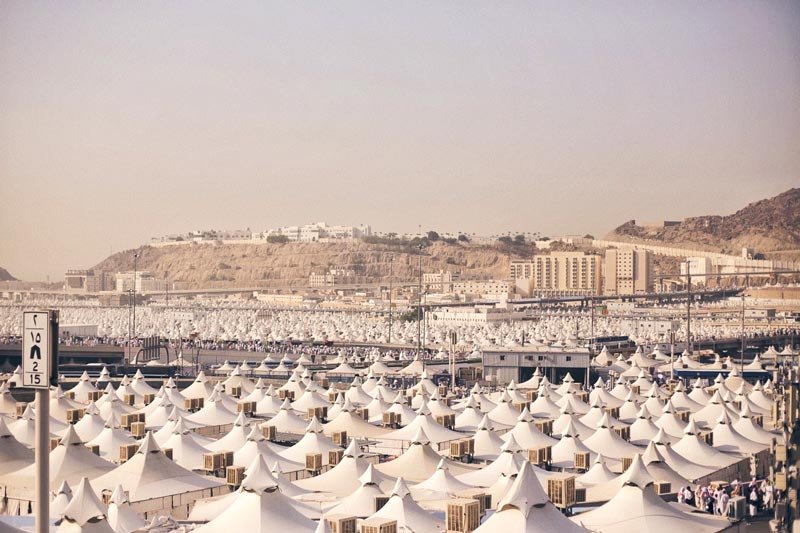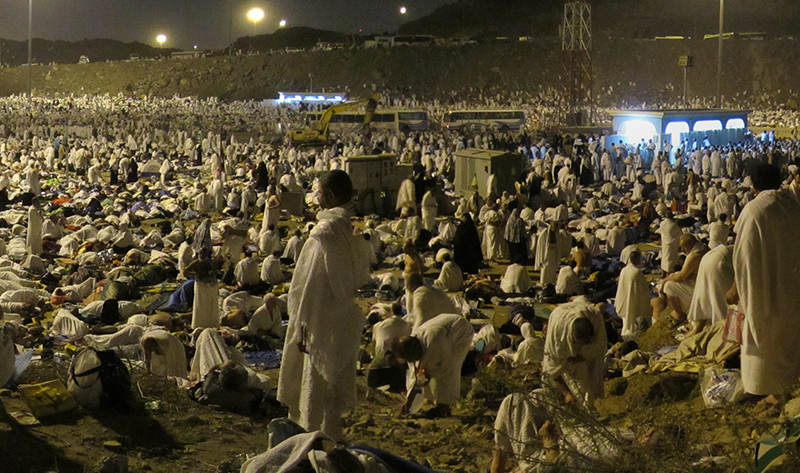Worshippers relish iftar experience in Prophet’s Mosque
MADINAH — Iftar or breaking fast at the Prophet’s Mosque during Ramadan provides a unique spiritual experience not only for the people of Madinah but also for the hundreds of thousands of pilgrims and visitors who come to the holy city from the different corners of the Islamic world.
One cannot witness such an atmosphere of social cohesion and harmony with tens of thousands of people joining a community meal anywhere else in the world barring the Grand Mosque in Makkah. People of different walks of life and different nationalities sit together inside the Prophet’s Mosque and its courtyards to break their fast.
“You can see this marvelous scene by sunset every day of Ramadan,” said Abdul Raheem Al-Haddadi, the reporter working for Al-Madina Arabic daily. “I have noticed that people of different races, colors, and cultures sit shoulder to shoulder to break their fast, helping and caring for each other.”
He added: “The most striking feature of this huge iftar gathering is that everyone gives priority to those who sit beside them while taking food and drinks.”
Adnan Dabour, a Madinah resident, said in the past most people of the city went to the Prophet’s Mosque before Asr prayer to perform the prayer in congregation. They try to find a place in Rowdah Sharief, the holiest section of the mosque between the Prophet’s tomb and his pulpit. Only a small number of them went to mosques in their neighborhoods.
“This was a custom we had followed may be until 50 years ago,” Dabour said.
“Only a few foreign pilgrims visited the mosque during Ramadan in those times. We used to carry water and various types of dates and bread and special Madinah dishes to break fast with other worshippers at the Prophet’s Mosque.
“We still do this every year to feel and enjoy the greatness of Ramadan sitting in the vicinity of the Prophet’s Mosque where we pray Maghreb, Isha, and Taraweeh with Muslims from different parts of the world. It’s amazing that hundreds of thousands break their fasts in the mosque without facing any difficulty.”
Fayez Al-Ahmadi said for the last 20 years he has been breaking his Ramadan fast with some old friends at the Prophet’s Mosque, enjoying its spiritual ambiance. “I have made it a point that I should not miss this opportunity throughout Ramadan,” he said.
“This is a tradition we have inherited from our forefathers as we used to accompany them when we were children,” Al-Ahmadi said. “I am extremely happy to see the competition between the faithful to do good and engage in philanthropic activities seeking the reward of Allah.”
Dates, bread, yogurt, and water bottles are supplied in abundance to meet the requirements of the increasing number of worshippers who break their fast at the mosque. “You can see the massive arrangements for iftar inside and outside the mosque with worshippers filling all its corners.”
Abdulwahab Al-Baluchi said he has been witnessing these marvelous iftar gatherings at the Prophet’s Mosque for several years.
“Ever since we were children we used to go to the Prophet’s Mosque for breaking the Ramadan fast and our fathers and relatives used to carry with them yoghurt, dates, bread, tea, and Arabic coffee, and we prayed Asr, Maghreb, Isha and Taraweeh at the mosque,” he added.
Article by: saudigazette.com.sa

